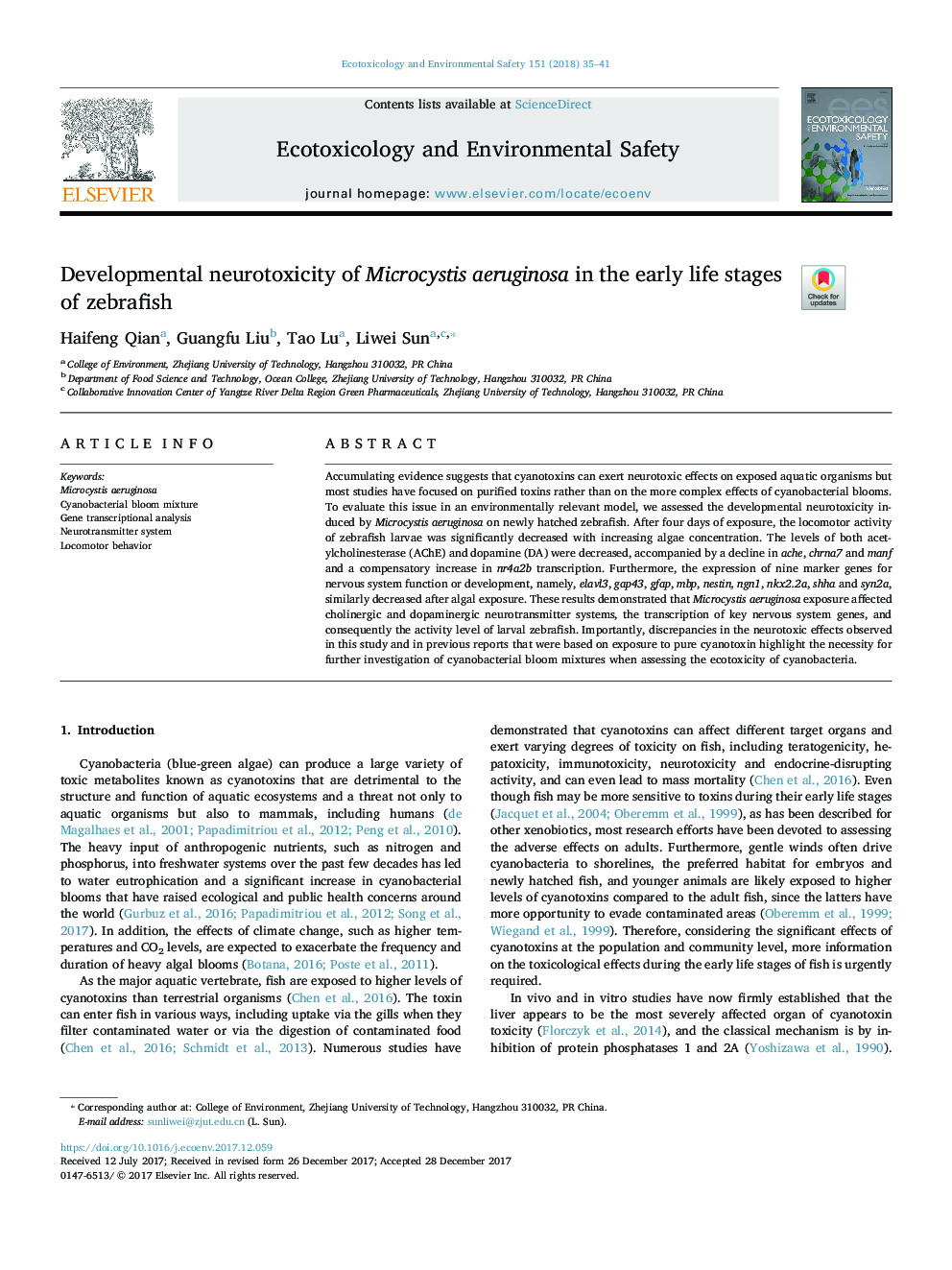| Article ID | Journal | Published Year | Pages | File Type |
|---|---|---|---|---|
| 8854304 | Ecotoxicology and Environmental Safety | 2018 | 7 Pages |
Abstract
Accumulating evidence suggests that cyanotoxins can exert neurotoxic effects on exposed aquatic organisms but most studies have focused on purified toxins rather than on the more complex effects of cyanobacterial blooms. To evaluate this issue in an environmentally relevant model, we assessed the developmental neurotoxicity induced by Microcystis aeruginosa on newly hatched zebrafish. After four days of exposure, the locomotor activity of zebrafish larvae was significantly decreased with increasing algae concentration. The levels of both acetylcholinesterase (AChE) and dopamine (DA) were decreased, accompanied by a decline in ache, chrna7 and manf and a compensatory increase in nr4a2b transcription. Furthermore, the expression of nine marker genes for nervous system function or development, namely, elavl3, gap43, gfap, mbp, nestin, ngn1, nkx2.2a, shha and syn2a, similarly decreased after algal exposure. These results demonstrated that Microcystis aeruginosa exposure affected cholinergic and dopaminergic neurotransmitter systems, the transcription of key nervous system genes, and consequently the activity level of larval zebrafish. Importantly, discrepancies in the neurotoxic effects observed in this study and in previous reports that were based on exposure to pure cyanotoxin highlight the necessity for further investigation of cyanobacterial bloom mixtures when assessing the ecotoxicity of cyanobacteria.
Related Topics
Life Sciences
Environmental Science
Environmental Chemistry
Authors
Haifeng Qian, Guangfu Liu, Tao Lu, Liwei Sun,
